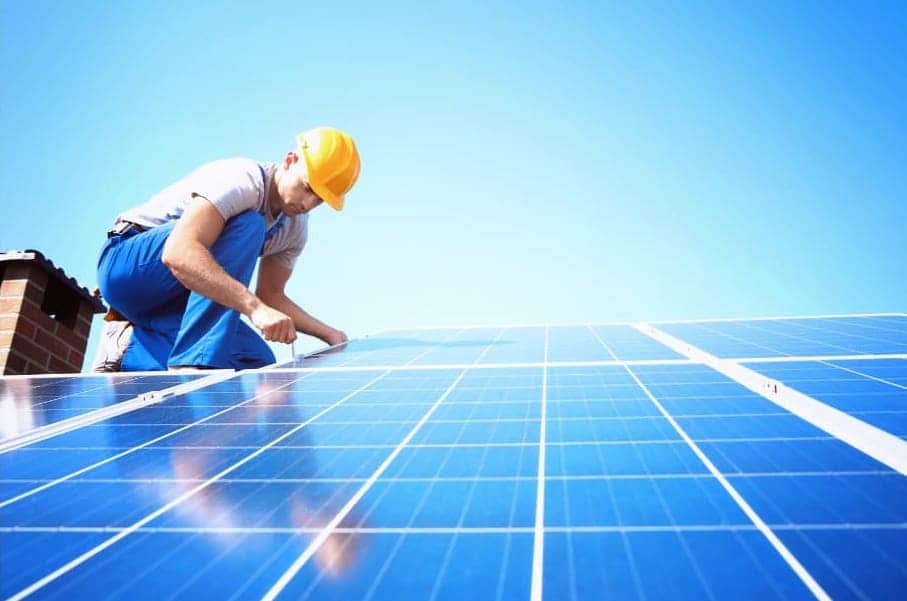How many solar panels do I need for my home?
The answer will depend on 10 key factors:
1. how much electricity (kilowatt-hours) you use each year.
2. which ways your roof(s) are facing (also known as azimuth; southwest at 135 degrees, south at 180, southwest at 225, and west at 275 degrees are the most solar-friendly directions). Ground or patio mounts can usually be installed to face south at 180 degrees.
3. the tilt of the roof faces (the angle or slope of the roof).
4. how much space there is on your roof or property for solar panels?
5. how much shade hits the spots where solar panels would go and for how long?
6. local building and fire codes.
7. the watt size and efficiency ratings of the solar panels.
8. the watt size and efficiency ratings of the solar inverters.
9. the distance from the solar panels to the main electrical service panel. The longer the run, the more loss of energy. Applies mostly in the case of ground and patio mounted solar power systems.
10. the net metering plans of your electric utility company.
How many solar panels do I need to power a 2000 square foot house?
We get asked these questions quite often, and as you can see from the factors above, your 2,000 square foot house might need less solar panels than your neighbor across the street with the same exact house and electricity usage because of their roof and shade issues, the solar PV panels and inverters they choose, and more.
Every single home and property is truly unique.
Let’s take a more detailed look at the 10 most significant factors that determine how many solar panels your house needs:
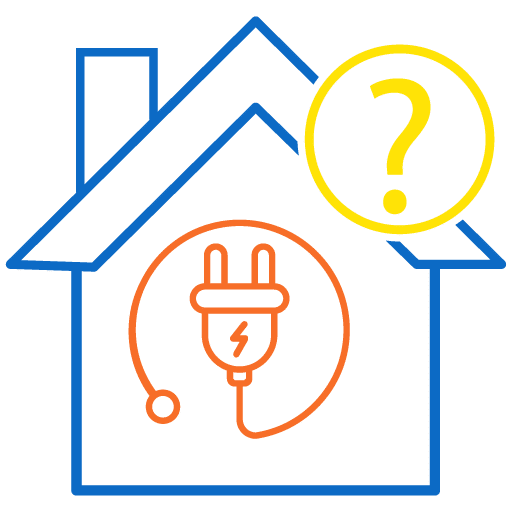
Factor #1 How much electricity do you use?
To customize a solar power system to the electricity needs of your home you first need to know how much electricity your household uses each year, so you’ll know how much the solar power system will need to produce.
Electricity is measured in kilowatt-hours (kWh), you’ll see this symbol on your electric utility company bill.
The amount of electricity you use changes with the seasons and where you live.
Coastal areas don’t use as much, or perhaps any, air conditioning, and so the electric usage and monthly bills there are much lower.
Inland areas are hotter, require more summertime air-conditioning, and use more electricity as a result.

Step #1 Get 12 month’s electricity usage data (kilowatt history) from your utility company.
There are two easy ways to get this history from your utility company:
1) You can just call them up and give them your address and account number, and they will provide you a month-by-month history for one whole year. You can reach SDG&E at 1-800-411-7343.
2) You can use the utility company’s online portal to get your last 12 months of electricity usage.
Go to your SDG&E account and download your “Green Button Data” or you can choose to “Connect My Data” to a third-party solar company to provide them your historical electricity usage so they can customize a system and quote for you.
Click this link for SDG&E Green Button Data and this one for SCE.
Sample Home’s Electricity Usage History for 12 Months from Utility Company
January 1,091 kWh
February 1,118 kWh
March 1,390 kWh
April 1,423 kWh
May 1,930 kWh
June 2,354 kWh
July 2,807 kWh
August 2,986 kWh
September 3,487 kWh
October 2,108 kWh
November 1,586 kWh
December 1, 292 kWh
How much electricity does an average American home use? Check out the statistics at the U.S. Energy Information Administration.
Once you know the monthly and total kilowatt-hours your household used last year, assuming it’s a typical year, then you know how much electricity you will need from a solar energy system every year to meet your household needs.
Also, here are a few things to consider about your electricity usage history and future needs.

a) Will your electric usage increase in the future?
Do you plan to add additional electric load in the form of a room addition, pool, spa, electric vehicle, etc? If so, your need is going to increase in the future so you may wish to overbuild as much as the local codes and utility will allow.
Note: SDG&E and SCE will not allow you to build a solar power system larger than 110% of your last 12 months kilowatt history because they don’t want you becoming an electric utility company and competing with them.
Both utility companies will allow you to expand your solar panel system beyond your 12-month kilowatt usage if you provide them receipts for new electric loads (electric car, pool, spa, etc.) They will allow for a petition to add these as additional electric load and approve a larger solar power system to meet their needs.
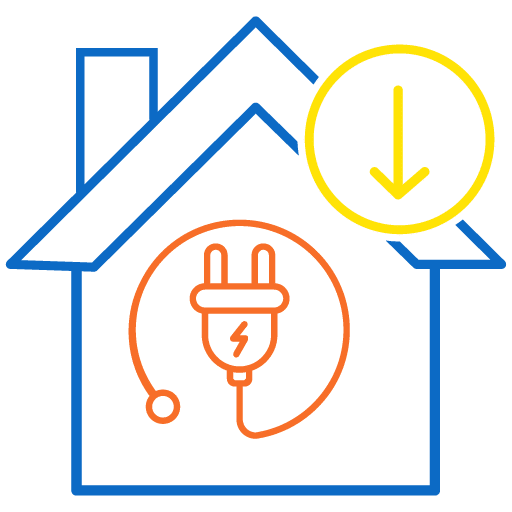
b) Will your electric usage decrease in the future?
Are there kids growing up who will move out in the next few years? Do you plan to decrease electricity needs soon? Are you removing a spa or pool, converting to LED lighting, or re-wiring the home, etc?
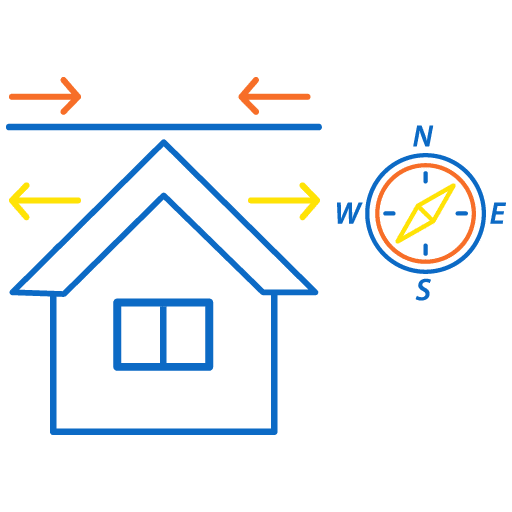
Factor #2. How much roof space is there and which way are the roofs facing?
Since the U.S.A. is in the northern hemisphere, the sun is in our southern sky most of the year, which means roofs that face south would get the most sunlight and therefore produce the most energy.
The same solar panel will produce different amounts of energy depending on which way it’s facing and the tilt of the roof or mount.
South-facing roofs are best, followed by southwest, west, southeast, and east. It’s not recommended to install solar panels facing more than 10 degrees north of west or east. The northern sky will usually not produce very cost-effective energy from even the most efficient solar panels. We do NOT recommend putting solar panels on northern-facing roofs facing from azimuths 285 to 80.
Most of the time, there is enough roof space for all the solar panels you need.
Sometimes the roof(s) dictate how many solar panels you can have because of limited space. Usually, it’s still enough space to let solar wipe out the top and middle-cost tiers of your electric utility bill.
Occasionally, your roof prevents any solar panels from being installed at all, or there’s not enough space to make it worth going solar. This usually happens when there are several small roofs with multiple angles and azimuths that are designed as such for architectural aesthetics.

Factor #3 What’s each roof’s tilt angle?
Roof slope, pitch, and tilt all mean the same thing, which is the angle of the roof. According to the North American Board of Certified Energy Practitioners (NABCEP), the ideal tilt is equal to your latitude. But that’s not how roofs are built.
The pitch in roofing is expressed by the ratio of the vertical and horizontal planes. For example, a roof that rises 4 inches for every 1 foot of horizontal run is a “4 in 12.” Four inches up for every twelve across, get it?
Roof Tilt Measurements:
- 12:12 pitch = 45.00 degrees (good luck standing on this one!)
- 11:12 pitch = 42.51 degrees (or this one)
- 10:12 pitch = 39.81 degrees
- 9:12 pitch = 36.87 degrees
- 8:12 pitch = 33.69 degrees
- 7:12 pitch = 30.26 degrees
- 6:12 pitch = 26.57 degrees
- 5:12 pitch = 22.62 degrees (common)
- 4:12 pitch = 18.43 degrees (common)
- 3:12 pitch = 14.04 degrees (common)
- 2:12 pitch = 9.46 degrees
- 1:12 pitch = 4.76 degrees

Factor# 4 Latitude and Longitude
Exactly where on planet Earth the solar panels are located, combined with the direction they’re facing and the tilt at which their angled, all play a combined role in the amount of electricity produced along with the size, efficiency, and degradation rates of the solar panels and inverters. The more favorable the available conditions, and the more efficient and reliable the solar panels and inverters being used are, the smaller the solar power system needs to be.
Those lucky enough to have south to west-facing roofs with good tilts will likely need slightly less solar panels than their neighbors with all east or west-facing roofs. Not a lot, but maybe one or two panels.
How much sunlight do your roofs get? You can check how many “sun hours” hit your exact spot on Earth through the U.S. government’s National Renewable Energy Laboratory Solar Maps.

Factor #5 Shade
Solar panels like sunshine, duh. They don’t produce energy when it’s dark, and no, they don’t make energy from moonlight. Solar panels also don’t like shade. Technology advancements have improved to isolate the reduction in power output due to shading from the rest of the solar panels, but still, shade means less, little, or no sun is hitting the solar panel in that area. No sun = no electricity, it’s that simple.
In summary, all shade reduces power output. It’s worse for some panel technologies more than others, but still has adverse effects for all.
Trees, chimneys, other roofs, power lines, and more can all interfere with your property’s ability to take advantage of solar power.
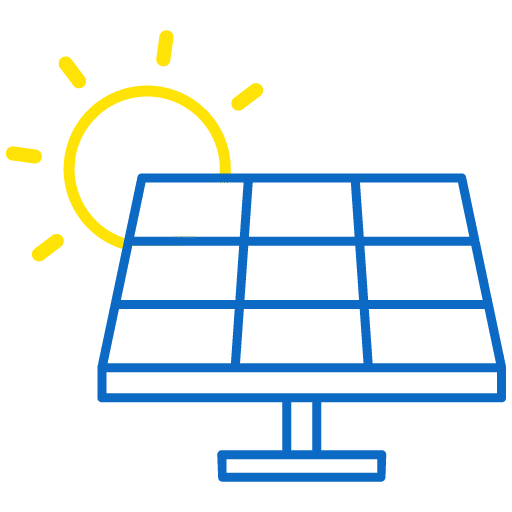
Factor # 6 Solar Panels Being Used
Solar panels come in many different sizes, shapes, colors, and with a difference in quality, efficiency, durability, warranty, and reliability from over 100 different manufacturers. Those solar companies have varying degrees of brand recognition, company size, financial strength, product quality, distribution, and experience in the solar industry.
Solar panel sizes vary by manufacturer and product, but roughly they’re between 60-66 inches tall by 39-42 inches wide.
Solar panels need to last 25 to 40 years or more and so does the company that manufactured them so the company will be there if you need them for warranty repairs along the way.
Has the solar panel manufacturer you’re thinking of using even been in business for 25 years? Will they be around 25 years from now? What do their financials say? Etc.
The number of kilowatt-hours a single solar panel produces depends on the sun hours of your location, the quality, efficiency, and durability of the solar panel, the inverter efficiency and reliability, shade, and all of the other factors mentioned in this list.
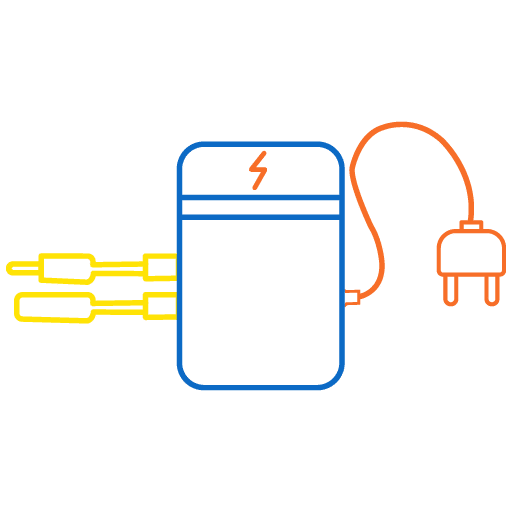
Factor # 7 Solar Inverters Being Used
The same quality and reliability differences exist for inverters as they do for solar panels. Inverters are needed to convert the solar DC power into the AC power your home uses.
Today, many modern solar panels have a micro-inverter built into or attached to each solar panel, effectively creating an AC power solar panel.
AC solar panels make installation and wiring much easier and reduce labor. It also allows for a small number, or even a single solar panel, to be mounted on small roof sections (which could not be done with traditional box inverters).
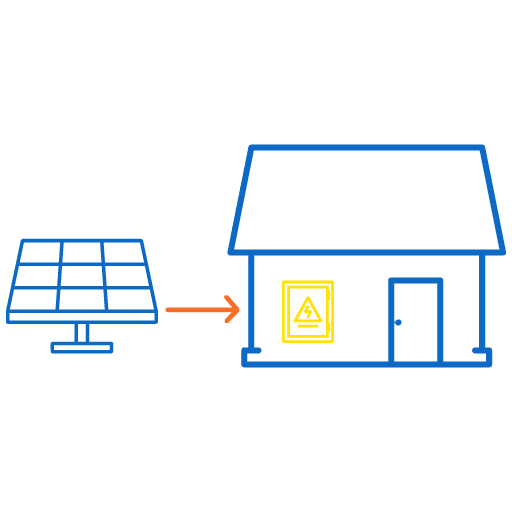
Factor # 8 Distance to Electrical Service Panel
The distance from the solar panels to your home’s main electrical service panel. The longer the run the more loss of energy. Applies almost exclusively to ground and patio-mounted solar power systems.
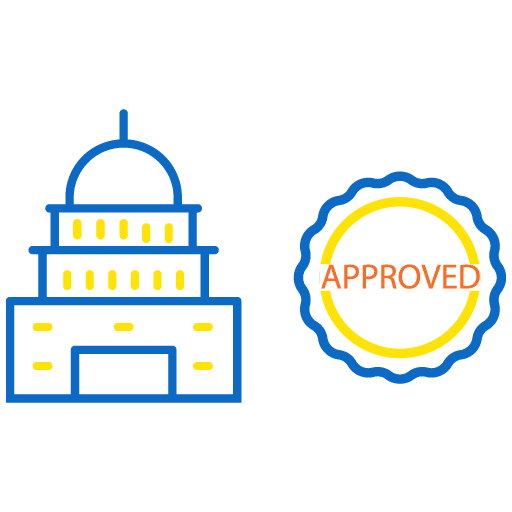
Factor #9 Local Building & Fire Codes
Local building and fire codes will dictate how much space is needed from the edge of the roof and in valleys to allow for firefighters to be able to walk on the roof in case of a house fire. This directly affects how many solar panels will fit on your roof(s).
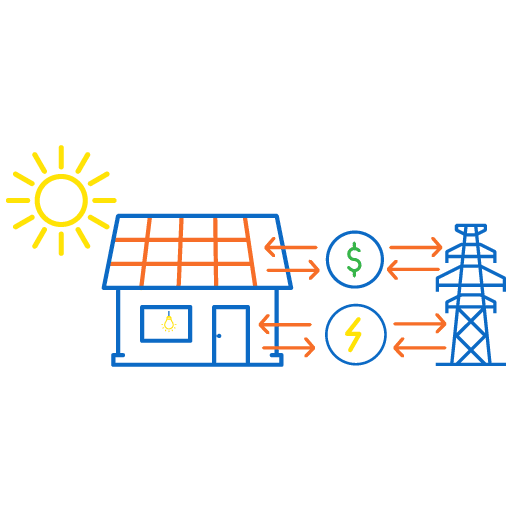
Factor #10 Local Utility Net-Metering Programs
Here in San Diego, SDG&E has solar-friendly net-metering plans available that provide you credits when your system produces more energy than you’re using during the day and sends the excess into the utility power grid for SDG&E to sell to your neighbors at peak prices.
Then at night, you’ll buy that power back from SDG&E when the sun is not shining, and your system is not producing any power, and preferably at a slightly lower off-peak rate.
SCE in the Inland Empire also offers solar net-metering plans.
Another option to this net-metering arrangement is to install a solar battery-storage system that receives that extra energy the system produces during the day for you to use at night. You use the batteries to replace the utility company, sort of.
You can still be connected to the utility company for any missing energy loads needed, or be sure to size the system correctly and disconnect from the utility company and be off-grid altogether.
Depending on your utility company, net metering may not be available to you, especially with local municipal utility companies. Check with yours about their solar net-metering plans to get accurate information before you go solar.
Can you run your whole house on solar power?
Yes IF most of the factors mentioned in this article are favorable to your ability to do so.
Under favorable conditions, you can run your whole house on solar power in three different ways:
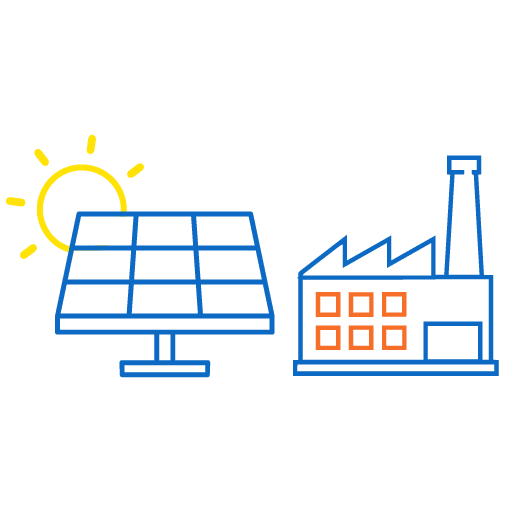
1) Grid-tied solar power with net metering:
This is the most common solar energy installation for homes.
You can design a solar energy system to produce enough energy for you to have a “Net Zero Energy Home” (ideally), meaning your solar system provides more electric power than you usually use during the day and receives Net Energy Metering (NEM) credits from the utility company for it. During the evenings, when the solar system is not generating electricity, you would use utility company energy and your credits.
Net Zero Energy means at the end of the year when all is said and done, it comes out to a net-zero amount of energy you needed from the utility grid. You gave them as much as you took back.
A vital part is the net metering where the utility gives you credits for the excess energy you send them, so the energy you use at night is offset by those credits.
Also, check out our article on 9 Reasons to Choose Solar Panels for Your Home.
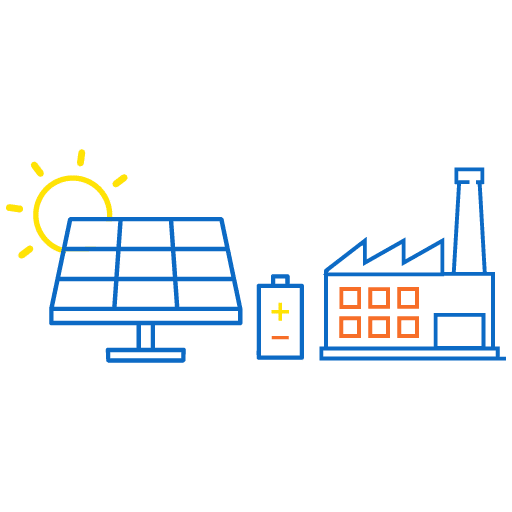
2) Grid-tied solar power with battery storage and net metering:
Install a solar battery storage system that holds the excess solar energy produced during the day for you to use at night. Essentially bypassing the utility company.
You’re still connected to the utility grid, but if the system is designed well, you’re not using utility company energy. As a backup, any electricity not provided by either the solar or batteries can be supplied by the utility-connected grid.
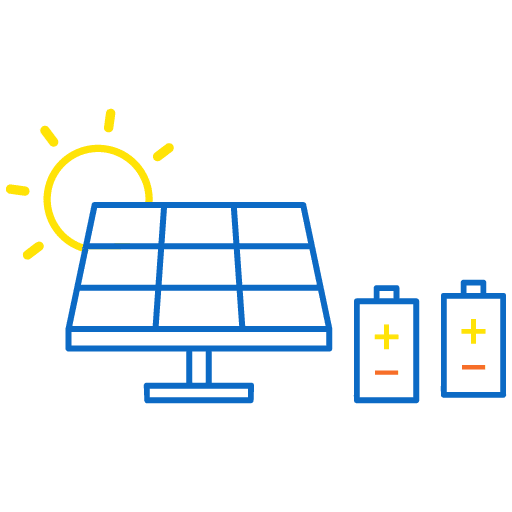
3) Off-grid solar power with battery backup:
This is the same as scenario #2 above, except there is no connection to the utility company at all. Extra special care must be taken with the calculations for sizing everything in the system to the load requirements of the property because there is nowhere to get electricity from if your batteries run out.
Step #2 Get A FREE Solar Analysis
A solar analysis will look at all ten factors that affect how big a solar energy system your household needs to deliver all the power your home needs.
All of that information is input into solar energy systems calculations software to calculate how many solar panels you’ll need with your exact roof conditions and electricity usage.
Zero money down financing options will also be calculated and presented to you.
For more about all of the financing choices, visit our “Complete Guide to Solar PPA, Solar Lease, and Buying Solar.”
The Solar Analysis can be done in-person or by phone and Internet if you prefer.
If the analysis shows significant savings and the size solar system you need can be safely installed your property, then you’ll also have an opportunity to hire Jamar Power Systems to be your solar provider and installer.
If you wish to hire us to install your solar power system, we’ll complete a preliminary contract then send out a solar technician to come to your home to take digital shade studies, measure and examine your roof and electric service panel and confirm that we can install and proceed as planned. A final contract is then drawn up for all parties.
If you’d like a ballpark estimate on how many solar panels your home will need, the approximate cost, and what a monthly payment would be with solar financing, use our free San Diego solar calculator.
Click here for more information about our FREE Solar Analysis.
- How Solar Batteries Work - March 4, 2024
- Solar Battery or Generator for Emergency Backup Power? - January 30, 2024
- How to Check If Your Solar Panels Are Charging The Solar Battery - January 12, 2024

